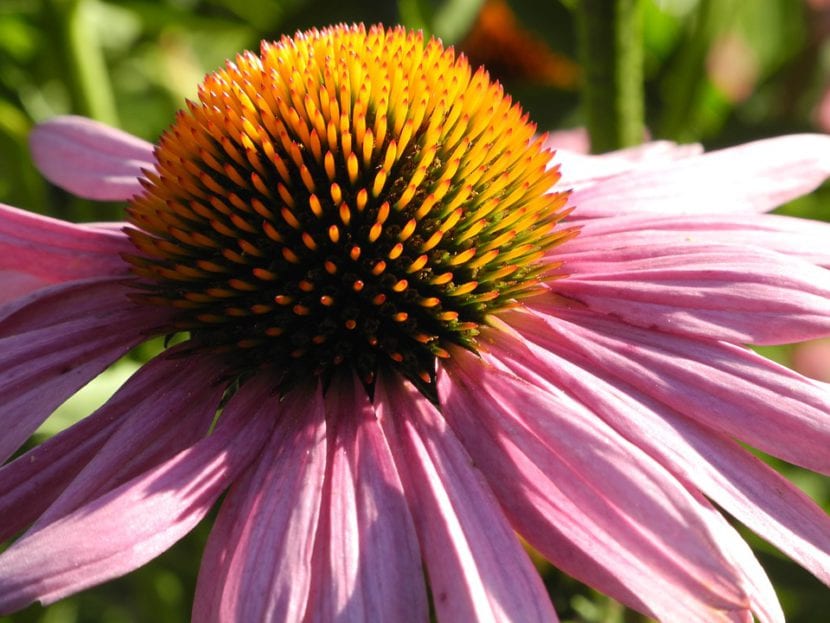
All the Echinaceae They are plants that beautify the garden in a spectacular way. They have very curious flowers; in fact, they are not simple flowers, but form an inflorescence composed of purple, yellow or white flowers arranged in the shape of conical heads. The cone sticks out quite a bit, so it draws a lot of attention.
In addition, they can be used both as an ornamental and medicinal plant, both in pot and in the garden.
Main characteristics of the Echinaceae
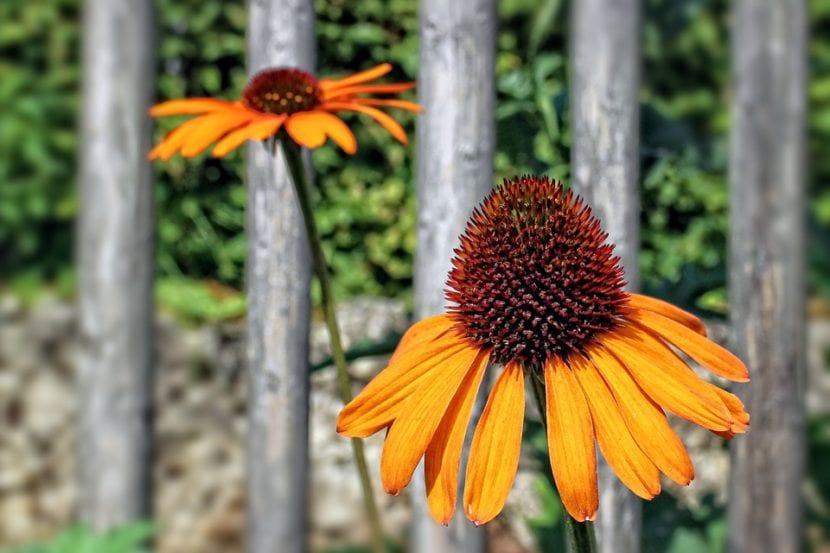
These magnificent plants native to North America belong to the Asteraceae family. The genus comprises 10 species, including the Echinacea angustifolia or the Echinacea purpurea. These are perennial herbs that can grow up to 2m in height, with lanceolate leaves up to 20cm in length by 10cm in width. The inflorescences sprout from the plant from a flower stalk that is around 40cm long, during the summer. Towards the end of autumn the seeds will ripen, which are elongated in shape, 1cm or 1,5cm long, and are light brown in color.
How are they cared for?

Our protagonists are very easy to care for and maintain. But we do have to take into account a series of things so that they grow without problems, because an error in the cultivation could seriously harm them.
Location
Put your Echinaceas in a place where they are exposed to sunlight ideally throughout the day. It can also adapt to a semi-shady place, but its flowers may not develop properly.
By the way, don't worry about the cold as they can withstand frosts down to -10ºC.
Irrigation
The watering of these plants must be regular: in summer, it will be convenient to water them 2-3 times a week, and the rest of the year every 5-6 days. It is important to avoid that the soil or substrate remains wet for a long time, since its roots could rot.
Transplant
Transplant it will take place in spring, after the risk of frost has passed. In the event that you want to move to a larger pot, it will have to be at least 4cm wider than the previous one; On the other hand, if you want to plant in the garden, it is advisable to mix the soil with a universal substrate for plants.
Pruning
Doesn't need pruning, but wilted flowers and leaves can be removed.
Echinaceae pests and diseases
These beautiful plants are not affected by pests nor do they have diseases. However, if the environment is very dry it could have aphid on their flower buds, which can be repelled or removed by spraying them with water or Neem oil.
If, on the other hand, the substrate or the soil is very humid, they would begin to look withered, with the fallen leaves. In this case, it is advisable to suspend watering until 4-5 days have passed.
How do they reproduce?
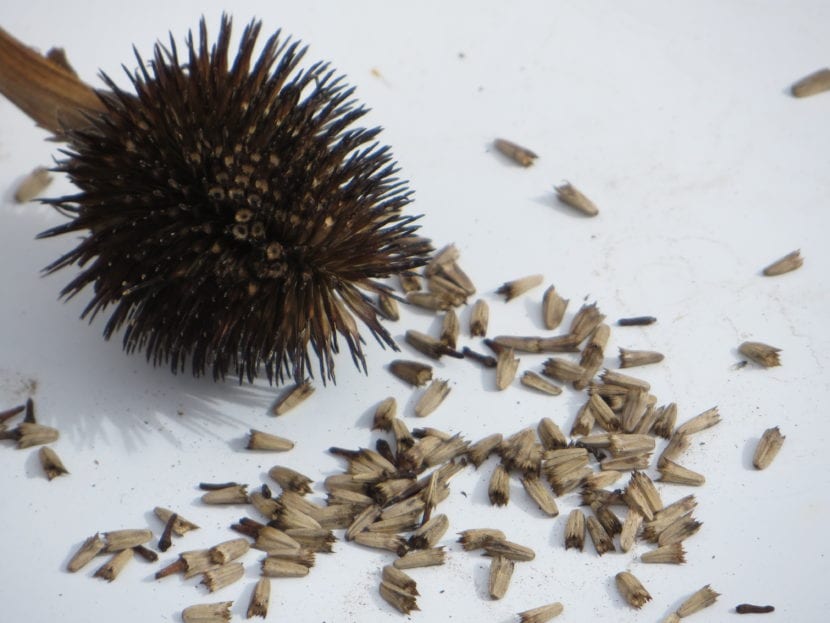
Image - evergrowingfarm.com
If you want to have new specimens in your garden or patio, you can do two things: divide it or sow its seeds. Let's see how to proceed in each case:
Division
In spring or fall you can divide your plant in two (or more). To do this, you have to do the following:
- If it is potted: If you have your Echinacea in a pot, you simply have to extract it and, with a hand saw, cut it in half, making a vertical cut from the surface of the substrate to the back of the root ball. Then plant them in new pots with universal plant substrate.
- If it is planted in the ground: Make a trench about 30 inches deep, and then cut with a hand saw to divide the plant. Then carefully root it out and plant it elsewhere.
Seeds
To sow its seeds, it is advisable to acquire them in spring, especially if you live in a climate where the temperatures are cool in autumn and winter (below 10ºC); in this way, the seedlings will be able to grow more in less time, which will ensure that in the very near future, more or less after two years, they will flower. They are sown as follows:
- Put them in a glass of water for 24 hours to know which are the viable ones (that is, those that sink), and those that do not. The first will be the ones that serve us, although you can also plant the others in a separate seedbed, because sometimes nature throws us the odd surprise 🙂
- The next day, prepare the seedbed. You can use conventional pots, seedling trays, milk or yogurt containers ... Regardless of what you use, it is important that the substrate is porous, so it is advisable to mix black peat with perlite in equal parts.
- Put a maximum of 2 seeds in each seedbed, separated from each other.
- Then cover them with a little substrate, and give them a good watering.
Finally, we will have to wait ... and water the seedbeds 3-4 times a week to keep the soil moist. After 7-14 days the first seeds will germinate, which you can pass to individual pots or to the garden when they measure about 10cm high.
Uses
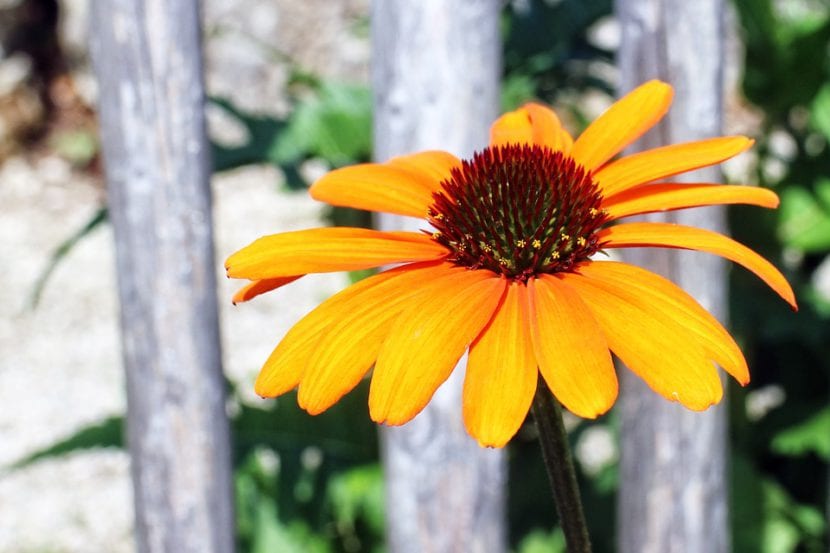
Echinaceae are mainly used as an ornamental plant, either in pots or planters, or in the garden to create floral rugs. But they are also used for their interesting properties.
Echinaceae properties
Are you one of those who get colds regularly? So this is your plant. Yes, yes, this is no joke: strengthens the immune system, preventing colds and even the flu, as revealed by a study from the University of Giessen (Germany) that you can read here.
But also also relieves symptoms of bronchitis, yeast infection, and herpes, among others.
Side effects of Echinacea
Although it does not usually cause side effects, some people do experience allergic reactions, such as skin rashes or breathing problems. For this reason, if you are or think you are allergic to these flowers, or to any other in the family (daisies, chrysanthemums, marigolds), do not consume it.
Likewise, it is also important to avoid it if you take immunosuppressants, if you have had nausea or any type of stomach upset after consumption.
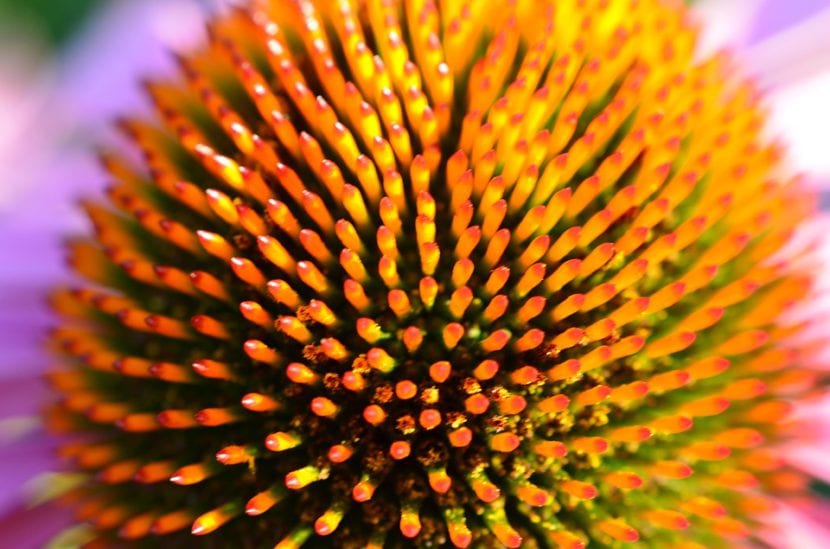
Echinacea is a spectacular plant: very grateful, it does not need special attention and, in addition, it helps us fight the cold and flu. What more could you want? 😉
Hi Monica, I have seen many varieties of echinaceas in online catalogs, would you recommend planting them in zone 10b? Some pages recommend stratifying the seeds or that the plants need to be cold to flower ... so I am somewhat doubtful. Greetings
Hi Hazel.
Yes, you can have it without problems. The seeds can be sown directly in pots, but it is true that when the weather is very hot it is better to stratify them in the fridge for a couple of months to increase their germination rate.
A greeting.